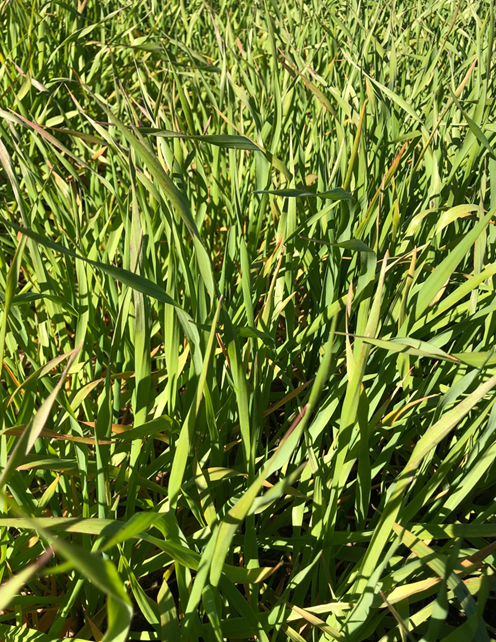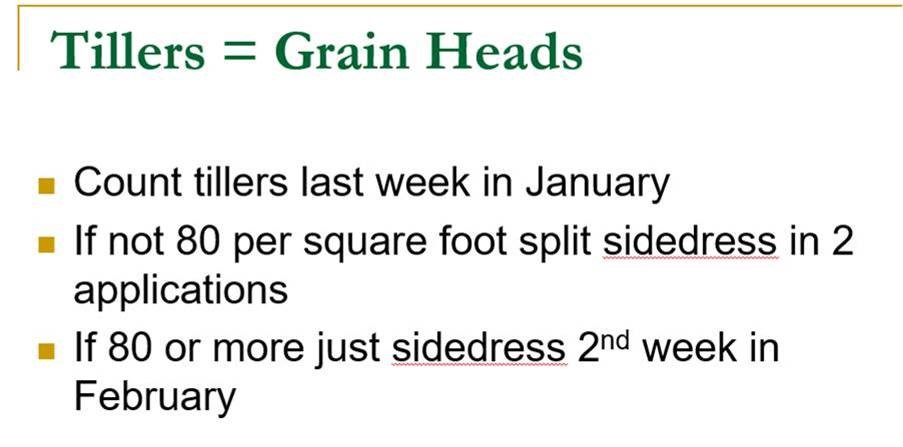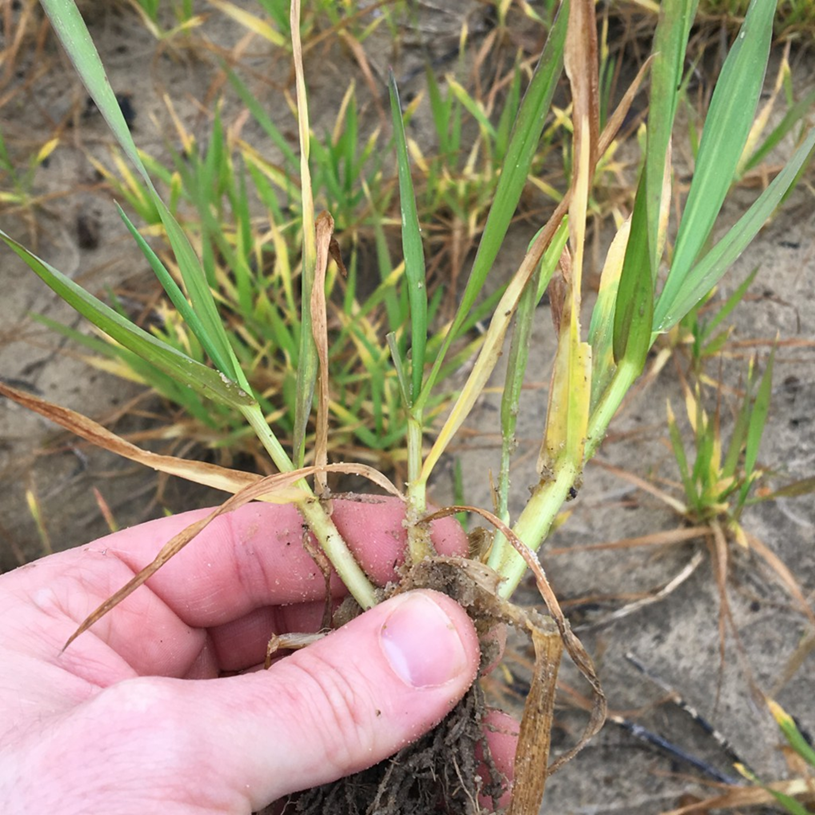Following is some timely information from Rome Ethredge, retired County Agent/Interim Grains Agronomist.
OATS
“This week we are seeing grains growth slowdown due to cold temperatures. Oats, photo below, especially showing some effects of the cold as oats are more sensitive to cold temperatures, especially temperature swings.”

We have gotten some calls about oats in the last day or two. Some fields may look more severe than the photo above. If we need to take a closer look, give us a call at Worth County Extension.
WHEAT
Time to Evaluate Tillering
Next week, the last week in January, will be time to count total stems in wheat and oats to then decide whether to split sidedress N or just wait and apply all of it the second week of February or a little later in North Georgia. See below, modified from Wheat UGA top 10 sheet. https://grains.caes.uga.edu/content/dam/caes-subsite/grains/docs/wheat/critical-management-inputs-2021.pdf
Topdress wheat with nitrogen in a timely manner in late winter and early spring.
During the later days of January, begin counting tillers to determine the need for additional nitrogen applications for the proper tiller production. If total stem counts counts (a stem with at least three leaves) exceed 80 or more per square foot, then apply all remaining nitrogen at stem elongation. Usually this occurs during early to mid-February in the southern half of Georgia. In extreme N. Ga, stem elongation may not occur till early March.
If the tiller count is less than 80 per square foot, then apply 30 to 40 lbs of N per acre to encourage tiller production prior to the onset of stem elongation. Complete the topdressing prior to 1st node stage. Nitrogen rates will vary according to the soil type, variety lodging resistance, irrigation capability, previous crop, etc. In general, total N rates range from 100 lbs N per acre to 120 lbs N. Be sure to include sulfur with the nitrogen. Sulfur deficiencies occur when the ratio of nitrogen in a tissue test exceeds 18:1. Tank mix an approved pyrethroid if aphids are present to reduce the risk to the barley yellow dwarf virus. Supply 15 to 20 lbs of S per acre if soils are sandy.
Each stem produces a grain head, so we want plenty for a good grain yield. If seed were broadcast then count stems in a 12 inch X 12 inch area. If drilled in rows, do the math to figure out how far down the row to count. For example on 7.5 inch rows, go 19 inches down the row to get a square foot. Make counts in several representative areas of the field.


If we can be of assistance at Worth County Extension, please let us know.